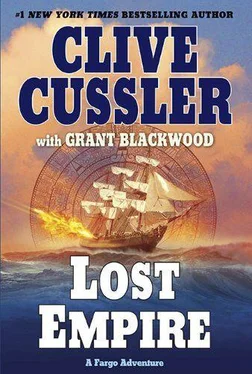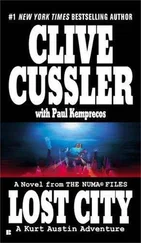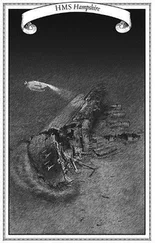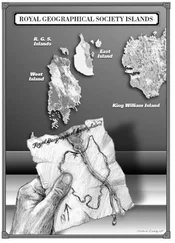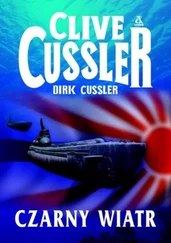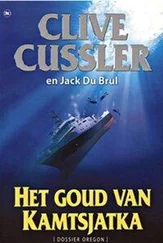“Right.” Sam combined the previous search terms with “Chumbe Island” and got zero hits. He tried again with the terms “diving,” “artifact,” and “discovery.” He scrolled through the stories, then stopped. “Huh,” he muttered.“What?”
“Probably nothing, but it’s curious. Two months ago a British woman named Sylvie Radford was found murdered in Stone Town. An apparent mugging gone wrong. She’d come to do some diving off Chumbe. Listen to this: ‘According to the woman’s parents, Ms. Radford had been having a wonderful diving vacation, having already found several artifacts, including what she thought might be part of a Roman-style sword.’”
“‘A Roman-style sword,’” Remi repeated. “Interesting. Her words or the reporter’s, do you think?”
“I don’t know. Either way, it’s a pretty specific description. Most laypeople would just say ‘sword.’”Remi leaned closer to the screen, then jotted down the reporter’s name. “It might be in her notes.”
Sam started tapping the keyboard again, this time with some urgency. Into the search box he entered “southern,” “Zanzibar,” “diving,” and “death” and set the time frame from present day to ten years earlier. Dozens of stories appeared on the screen.“Let’s split them up,” Remi said, then typed the terms into her own search box. “Start with the oldest?”
Sam nodded.
In years ten through eight, four deaths were linked to their search terms. In each case, however, independent eyewitness reports confirmed they were accidental: one shark bite, one diving mishap, and two vehicle accidents, both involving alcohol.“Here,” Remi said. “Seven years ago. Two people, both tourists on diving vacations.”
“Where exactly?”
“It just says the southwest coast of Zanzibar. One of them was killed by a hit-and-run driver. The other one fell down some steps in Stone Town. No alcohol involved, no witnesses.”“Six years ago,” Sam said, reading from the screen, “two dead. One suicide, one drowning. Again, no witnesses.”
And so it went with year five up to the present day: tourist divers, most of them spending time near or around Chumbe Island, dying in strange accidents or muggings gone wrong.“I count five,” Remi said.
“I’ve got four,” replied Sam.
They were silent for a few moments.
Remi said, “Has to be a coincidence, right?” Sam simply stared at his screen, so Remi said, “Otherwise, what are we saying? Rivera and whoever he works for have been murdering divers that show an interest in Chumbe Island?”
“No, it can’t be that. They would number in the hundreds . . . the thousands. Maybe it’s the people who declare their finds. Or take them to local shops for identification. If we’re right about this, these people have to have something else in common.”“They told someone about what they found,” Remi offered.
“And it was the right kind of artifact, something to do with the Ophelia . Or the ship with the blotted-out name.”
“Either way, if she’d sunk off Chumbe, artifacts would be washing up on the beach. Every monsoon there would be debris just sitting on the bottom waiting for someone with a Ping-Pong paddle to come along.”
“True,” said Sam. “But there are plenty of people who find something and never mention it. They go home and put it on their mantel as a souvenir. In fact, that describes most casual treasure divers: They find something, make a minor effort to identify it, but if it’s not something obviously ‘treasure-ish’ they treat it as a keepsake . . . ‘Our week in Zanzibar.’”“This is a huge leap we’re talking about, Sam.”
“I just remembered something: Rivera said he’s been looking for the Ophelia for seven years.”
“About the same time the strange deaths started.”
“Exactly. I need to call Rube. We need to find out how good Tanzanian immigration and customs are at recordkeeping.”
SAM MADE THE CALL and explained their request to an incredulous but willing Rube Haywood, who said, “So your theory is that Rivera was in Zanzibar around the time all the deaths would have taken place?”“It’s worth a shot. Even if the records don’t show he was here every time, he may not have traveled under his own name.”
“I’ll look into it. Wouldn’t hold your breath.”
Sam thanked him and disconnected.
A few minutes later Ms. Kilembe knocked on the door and peeked her head inside. “Do you need anything?”
They thanked her and declined. She was turning to leave when Sam asked, “Ms. Kilembe, how long have you been with the library?”“Thirty years.”
“And how long in this area?”
“All my life. I was born in Fumba, on Zanzibar.”
“We’re looking for anything on a ship called Ophelia . Does that name mean anything to you?”
Ms. Kilembe furrowed her brow. After ten seconds of thought, she said, “I assume you’ve been to the Blaylock already?”
“The Blaylock?”
“The Blaylock Museum in Bagamoyo. There’s a charcoal sketch there of a ship. Unless my memory fails me, the ship’s name is Ophelia.”
BAGAMOYO
OF THE TWO CITIES WITHIN EASY REACH OF ZANZIBAR , DAR ES Salaam and Bagamoyo, the latter was Sam and Remi’s favorite. With a population of thirty thousand, Bagamoyo is a microcosm of both traditional African and colonial African history without the big-city bustle of Dar es Salaam and its two and a half million inhabitants.
Founded by Omani nomads in the late 1700s, Bagamoyo has at times been home to Arab and Indian traders of ivory and salt, Christian missionaries, slave traders, the German East Africa colonial government, and big game hunters and explorers bound for Morogoro, Lake Tanganyika, and Usambara.
“Here’s something we didn’t know,” Remi said, reading from the guidebook as Sam drove. “David Livingstone, in all his years in Africa, never visited Bagamoyo-at least not alive. He was brought to Bagamoyo after he died and was laid out in the Old Church Tower, now called Livingstone Tower, to wait for high tide so they could ship his body to Zanzibar.”
“Interesting,” Sam said. “I’d always assumed he’d used Bagamoyo as a staging area just like everyone else. Okay, we’re on the outskirts. Where’d Ms. Kilembe say the museum was?”
Remi plucked the Post-it note from inside the guidebook and read: “Two blocks from the old German boma, a fort.”“Which one? There are two, I think the guidebook said.”
Remi flipped over the note. “That’s all she wrote. Guess we’ll have to check them both.”
They found the first a few hundred yards north of three of Bagamoyo’s biggest tourist attractions: the crocodile farm, the Kaole Ruins, and a five-hundred-year-old baobab tree. They parked on the dirt road before the crumbling whitewashed fort and got out. A teenage boy walked by with a donkey on a lead. He smiled broadly and said, “Jambo. Habari gani?”
Hello. How are you?In halting Swahili, Sam replied, “Nzuri. Unasema kiingereza?”
“Yes, I speak little English.”
“We’re looking for the Blaylock Museum.”
“Oh, yes, Crazy Man House.”
“No, I’m sorry, the Blaylock Museum.”
“Yes, same thing. Other boma
. One kilometer up. Livingstone Cross, yes?”
“Yes. Asante sana ,” Sam replied.
“You’re welcome, bye-bye.”
With a click of his tongue, the boy continued on with his donkey.
“Your Swahili is improving,” Remi remarked.
“Just don’t ask me to order food. You won’t like what we get.” “What did he mean ‘Crazy Man House’?”
“Guess we’ll find out.”
THEY FOUND THE OTHER boma with little trouble, following glimpses of its whitewashed battlements until they reached its crushed-shell parking lot. Here there were more locals going about their business, selling food and sundries from storefronts and awning-covered carts. Sam and Remi got out and began walking, looking for a sign that read either “Blaylock” or “Crazy Man.” After twenty minutes of fruitless searching, they stopped at a vendor’s cart, bought two ice-cold bottles of cola, and asked for directions.“Yes, Crazy Man House,” the man said. He pointed west down a narrow dirt alley. “Two hundred meters there, find wall, then thick trees. Turn right, find path, find place.”
Читать дальше
